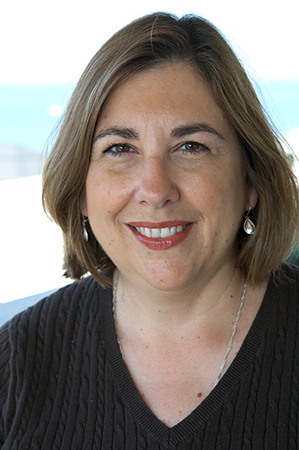By Dawn Price

During the past few months our proposal to permanently house Laguna’s most vulnerable homeless people has sparked a lively community conversation. At the same time, some important work at Friendship Shelter has proceeded, largely unnoticed.
Well known is the fact that, along with our development partner, Jamboree Housing, we are proposing to house 40 disabled homeless people in efficiency-style apartments that we hope to build, along with a permanent emergency shelter, at the site where the current ASL operates. Less known is the fact that we’re already successfully housing 18 similarly-impaired people at scattered sites throughout Orange County.
A grant from the US Department of Housing and Urban Development (HUD), received late last year, is making it possible. We’ve rented nine two-bedroom apartments in Dana Point, Laguna Hills, Mission Viejo, and Laguna Woods. There, we’ve placed 18 people who’ve been qualified as chronically homeless: That is, they have been homeless for a significant period of time and have a disability. Our new tenants pay a third of their incomes in rent. HUD also pays for supportive services, which include a case manager, community supervisors who assist with daily activities, and a benefits specialist who ensures that tenants are accessing additional resources.
While supportive housing has been a strategic priority for Friendship Shelter for nearly five years, we found ourselves on a steep learning curve in actually implementing the program. Having been trained by the experts at the 100,000 Homes Campaign (100khomes.org), we wanted to challenge ourselves to work with the most vulnerable people who could live safely and successfully in private-market housing.
As we began selecting our tenants, we asked ourselves many of the same questions the community is now asking about our Laguna Canyon proposal. Would we be able to house those we knew best – those who we’ve been serving in our current programs? How would communities respond to these clients as their neighbors? What kinds of disruptions might people who are coming from long-term homelessness make in their new homes? Did our staff have the capacity to respond swiftly and well to client needs?
We’ve been encouraged and, at times, surprised by the answers. All 18 of our tenants came from our own programs. We followed all laws and regulations attached to the funding and found that we were able to house our local, known clients. Two-thirds came from the ASL. Neighbors have largely welcomed, or not noticed, our clients in their midst. For the most part, our tenants are grateful for the safety and security of a furnished, two-bedroom apartment and are eager to respect it and, by extension, their neighborhoods. And our staff team has been very capable of problem-solving when they are needed.
The problems have been our biggest surprise. Two tenants had difficulty adjusting to new surroundings, and opted to continue sleeping in the shelter a few nights while spending days at their apartments. Staff gently provided transportation to and from the shelter during those transition days. One tenant reported a desire to move back to the shelter permanently; when staff investigated, they discovered her concern was that she didn’t know how to get to her church on Sundays. A willing church member now provides that transportation.
In a few cases we’re already seeing tenants begin to face internal challenges that they were unable to address while living on the street. Our staff team is helping them do that.
It has not been all welcome mats and hugs. We’ve had a few tough issues. We’ve addressed them. The difference is we’re addressing those challenges from a position of stability and safety. We’ve been creative, we’ve been firm, and we’ve been, so far, uniformly successful.
Watching 18 chronically homeless people walk in to their permanent homes has been profoundly satisfying for us. And, it’s renewed our belief in this solution. These 18 are vulnerable but able to live with staff check-ins a few times a week. Left at the ASL are many who will need daily, if not more frequent, supportive services. For them, a dedicated facility with on-site management is the only reasonable alternative.
That’s why we’re passionate about our proposal. We want to welcome 40 of our community’s most vulnerable homeless people home. In doing so, we want to remove them from our streets forever, and allow our community to repurpose resources like police, fire, and emergency rooms to respond to other disruptions and needs in our City.
If, in our passion, we’ve given the impression that those who question our plan lack compassion or heart, that’s our mistake. We can do better. We want to listen, to respond, and to improve our proposed solution with community input. That’s why we’re hosting three community forums next week. We hope to see full rooms and open minds. We promise to listen first and talk second. We invite you to be a part of these conversations.
Upcoming community forums on supportive housing:
Tuesday, June 17, 8:30 a.m. – Focus on business community; all are welcome
Thursday, June 19, 7 p.m. – Focus on Canyon neighbors; all are welcome
Saturday, June 21, 11 a.m. – General focus
All forums will be held at the Laguna Beach Woman’s Club, 286 St. Ann’s Drive.
For more information visit www.friendsofsupportivehousing.org
Dawn Price is Executive Director of Friendship Shelter.





Dawn: Excellent article in explaining the vision. Perhaps we would feel more comfortable in supporting this program if you could tell us what is the maximum number of homeless that Laguna Beach should support… when is enough, enough.
If you have a finitely & absolute number in mind, please share it with us.
[…] is that person to our community in terms of their use of public services,” explained Dawn Price, executive director of the Friendship Shelter, a transitional housing service for adults at 1335 S. […]